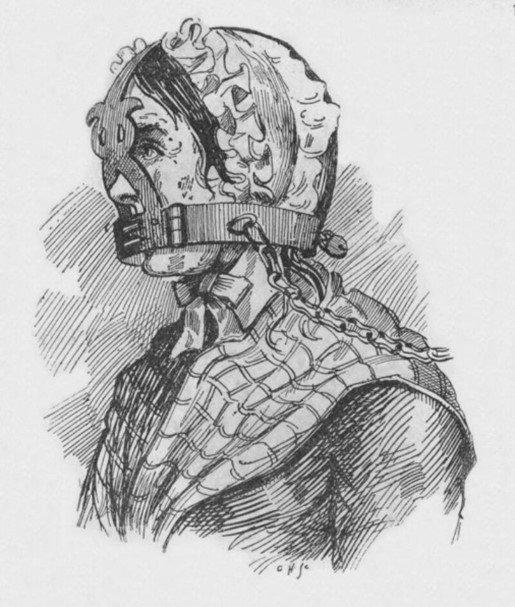Let’s Have a Chat About the Scold's Bridle
/History has a way of revealing some of the most bizarre and fascinating relics from the past. One such artifact is the Scold's Bridle, a device that seems like it came straight out of a twisted medieval comedy. But it was very real, and it sheds light on a time when women’s voices were brutally silenced – both literally and metaphorically.
Now, I’d never kink shame someone, but this contraption is not what you think. Get your mind out of the gutter. Let’s set the record straight. Imagine a time when women were silenced, quite literally, by a peculiar form of punishment known as the Scold's Bridle. This contraption, also known as the "gossip's bridle" or "brank's bridle," was designed to humiliate and restrict those deemed too talkative or troublesome in the eyes of society. Oh, those Chatty Cathys!
Women who disrupted their neighbours' peace by loud argumentation, gossip, offensive speech, or physical altercation were referred to as "scolds" under the law. I think we call them Karens now?
Bridles were in fact illegal and could not be used to chastise people deemed to be scolds. Yet, during the 16th and 17th centuries, local magistrates in Scotland and England, used these devices. Methinks, the men used their positions of power to pout and act out?
The scold's bridle was a component of a larger culture of fear of witches, prostitutes, "shrews," and other unorthodox women who didn't want to play the role of quiet, subservient wives.
The Scold's Bridle consisted of a metal mask that enclosed the wearer's head. It's said that some Scold's Bridles had added features: some, a small bell attached to the front. Not only did it silence the wearer, but it also called for more looks and shame. Others featured a cruel assortment of spikes and a protruding metal plate that rested on the tongue, making speech impossible and would cause the wearer’s tongue to be cut if they tried to speak. Wow, the sheer number of men I’d love to strap this to. I know, I know…it’s cruel…still though.
Wearing a Scold's Bridle was not only uncomfortable but also incredibly embarrassing. Picture the poor individual paraded through town squares, often attached to a post, with the bridle in place. It was the medieval equivalent of a public social media shaming.
At the dawn of the Victorian Era, however, this form of punishment started to fall out of fashion. A judge ordered an iron brank destroyed in 1821 as he, like other Victorians, increasingly saw them as old-fashioned and absurd. That said, the last recorded use of a Scold’s Bride took place 30 years later in 1856. Incredibly, the crime of being a 'scold' was not dropped from the statute books in Britain until 1967.
The Scold's Bridle is a peculiar piece of history that serves as a stark reminder of how society has evolved. While it may have been used as a means of control and humiliation in the past, we can't help but chuckle at the sheer absurdity of this invention. Thankfully, modern times have given us more humane methods of dealing with chatterboxes and troublemakers, proving that laughter is indeed the best way to overcome the strangest and most disturbing relics of the past.
Hi, my name is Abby Wallingford. I’m currently in my second year in Professional Writing at Algonquin College. I have always been interested in reading and writing. Ever since I was young I have been coming up with ideas and writing them down, even making edits to books I would read in attempts to “make them better”. If I’m not dreaming up a new plot or world for a book, I’m dreaming of traveling to the historic places where my inspiration stems from. I’m fascinated with all things history and mythology and can’t wait to share these grim and grotesque stories of the past with you.




